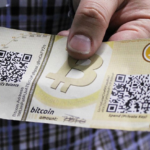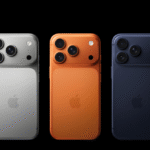In today’s fast-paced business world, making a lasting impression is more important than ever. Traditional business cards have long been a staple of networking, but as industries evolve, so does the way professionals present themselves. Enter 3D printing—a game-changing technology that is revolutionizing the business card industry. With the ability to create intricate, customized designs that go beyond the limitations of traditional printing, 3D-printed business cards are setting a new standard for uniqueness and innovation. If you’re looking for a business card to print to set yourself apart, 3D printing might be the perfect solution.
What is 3D Printing, and How Does it Apply to Business Cards?
3D printing, also known as additive manufacturing, is a process that creates three-dimensional objects by layering materials based on a digital model. This technology has been applied in industries ranging from healthcare to automotive, and now, it’s making waves in the world of business cards. Unlike conventional printing methods that rely on ink and flat paper stock, 3D printing allows for depth, texture, and complex geometries, resulting in business cards that truly stand out.
Benefits of 3D-Printed Business Cards
1. Unmatched Customization
One of the most significant advantages of 3D-printed business cards is the ability to customize every detail. Whether it’s incorporating a raised company logo, a miniature version of a product, or a textured pattern that represents your brand, 3D printing makes it possible to create business cards tailored to your identity.
2. Enhanced Tactile Experience
Standard business cards rely on visuals, but 3D-printed cards introduce a whole new sensory element. With embossed text, intricate engravings, and unique shapes, these cards make an impact the moment someone holds them, increasing the chances of being remembered.
3. Sustainable and Eco-Friendly Options
Many 3D printing materials, such as biodegradable plastics and recycled filaments, offer environmentally friendly alternatives to traditional paper cards. This not only helps reduce waste but also aligns with the growing trend of sustainable business practices.
4. Stronger and More Durable
Paper business cards are prone to wear and tear, often getting crumpled, ripped, or lost. 3D-printed business cards, on the other hand, are made from sturdy materials like plastic, metal, or resin, ensuring they last much longer.
5. Interactive and Functional Elements
3D-printed business cards can incorporate moving parts, QR codes, or built-in features like USB drives, turning them into practical tools rather than just a piece of contact information. This added functionality increases their value and likelihood of retention.
Challenges of 3D-Printed Business Cards
Despite their advantages, 3D-printed business cards do come with a few challenges.
1. Higher Production Costs
Compared to traditional business cards, 3D printing is more expensive due to material costs and production time. However, for businesses looking to make a strong impression, the investment may be well worth it.
2. Bulk Production Limitations
While traditional printing methods can produce thousands of business cards in a short amount of time, 3D printing is a slower process. This makes it less ideal for mass production but perfect for exclusive, high-quality designs.
3. Storage and Portability
Because 3D-printed business cards are often thicker and bulkier than paper cards, carrying large quantities can be inconvenient. However, their uniqueness makes them less likely to be discarded or forgotten.
The Future of 3D-Printed Business Cards
As 3D printing technology continues to advance, costs will likely decrease, making this innovative approach more accessible to businesses of all sizes. Future developments may also include new materials, faster production methods, and even smart business cards embedded with digital capabilities. In a competitive market, staying ahead of the curve is crucial, and 3D-printed business cards are paving the way for a new era of networking.
Final Thoughts
The business card industry is undergoing a transformation, and 3D printing is at the forefront of this change. Offering endless customization, durability, and a tactile experience, 3D-printed business cards provide a modern and memorable way to share your contact information. While the costs and production time may currently be barriers for some, the benefits far outweigh the challenges for those looking to make an unforgettable impression. If you’re ready to step beyond traditional paper cards, 3D printing is an exciting option to explore.















